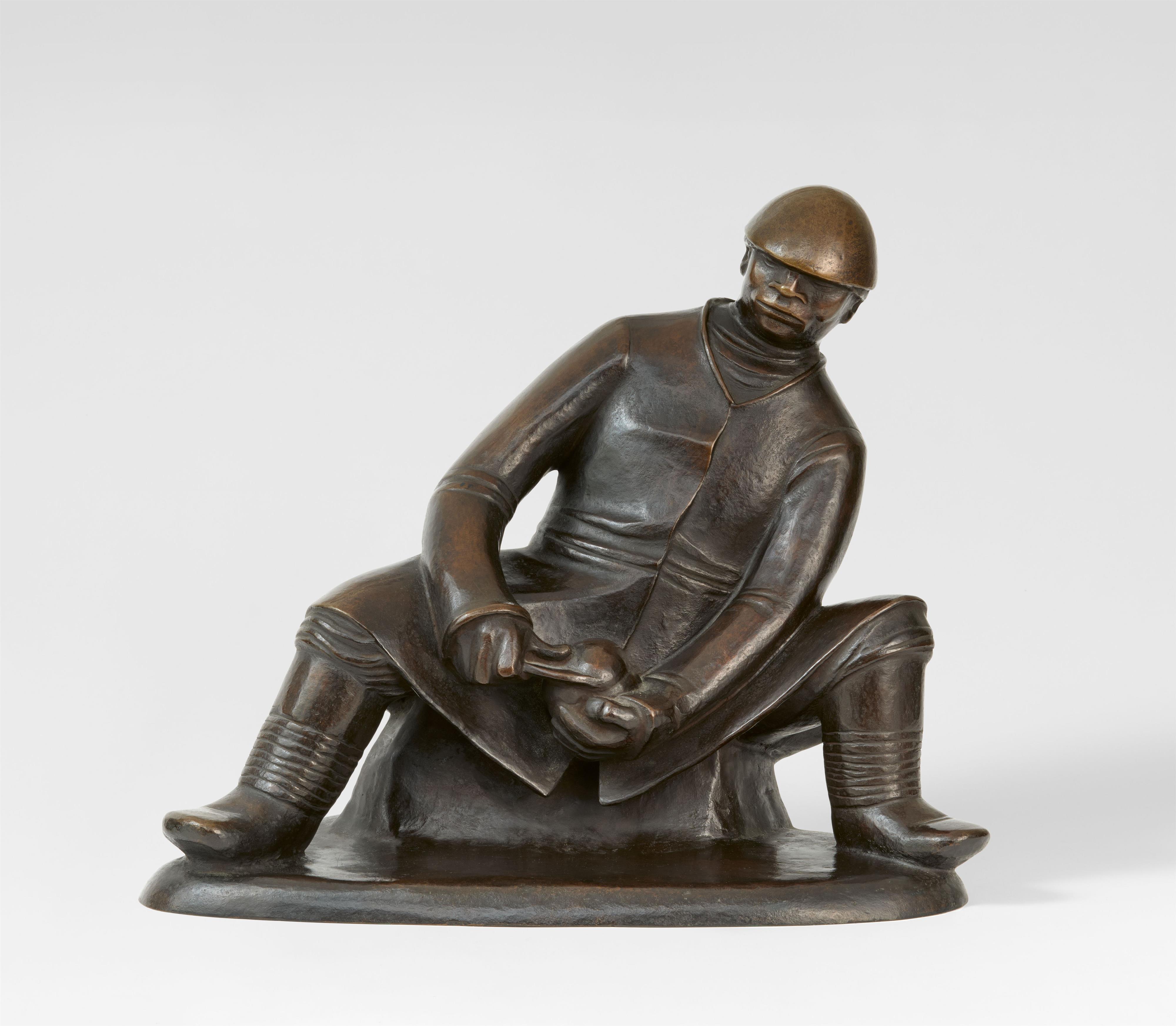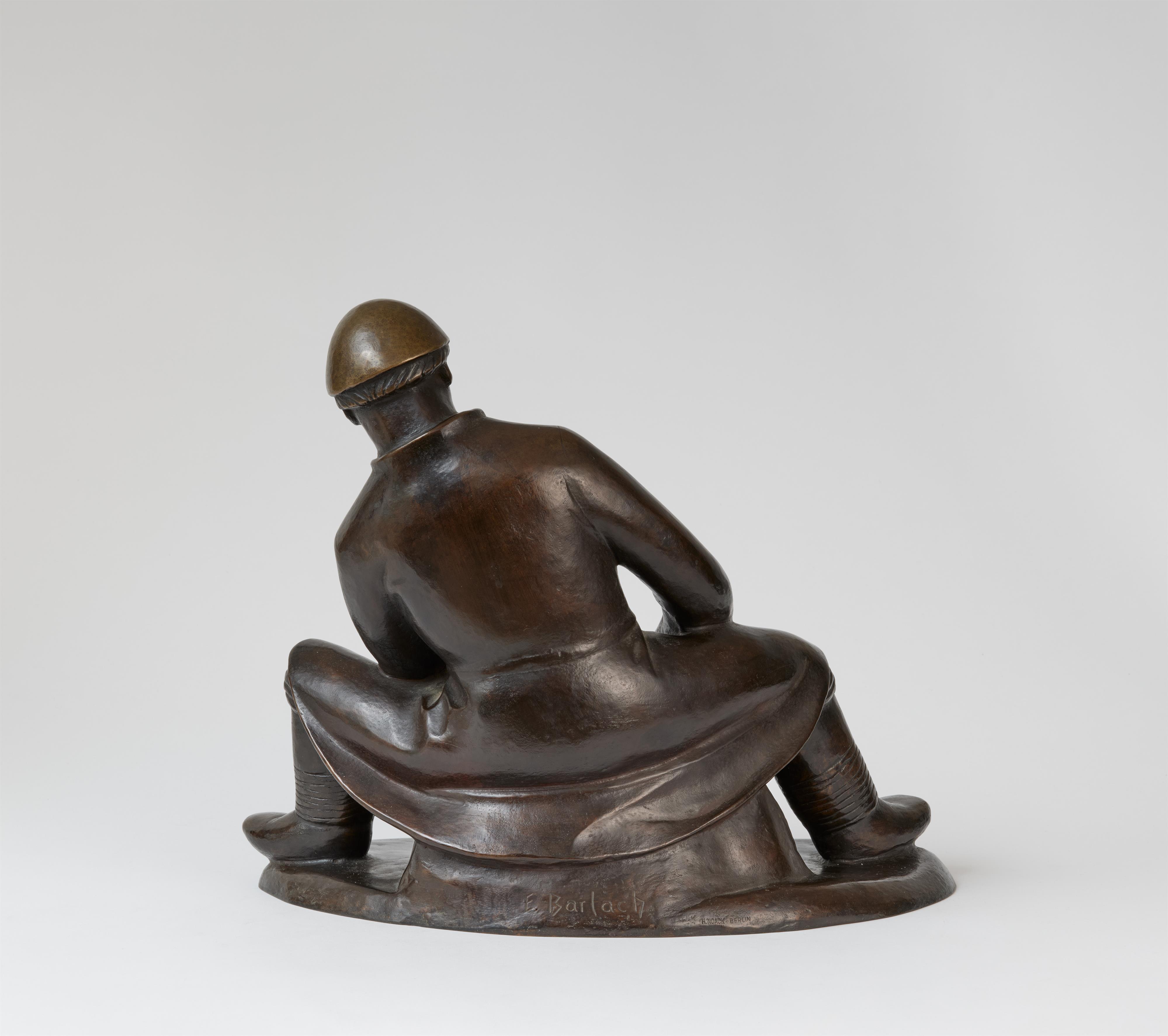Ernst Barlach
Der Melonenesser
1907 (Cast presumably from 1949)
Bronze. Height 33.7 cm. Signed 'E. Barlach' on the reverse of the plinth and with the foundry stamp "H. NOACK BERLIN" on the reverse side at the rim. - A fine dark brown, partly golden patina.
Ernst Barlach's rare bronze sculpture "The Melon Eater" (also known as "The Melon Cutter" and "The Melon Peeler") is one of the works that the sculptor created immediately after his trip to Russia and based on the impressions he gained there. In August 1906, at a time of artistic uncertainty and lack of success, he and his brother Nikolaus set off for Kharkov in southern Russia via Warsaw. After only a few weeks, Barlach realised that in observing and drawing the Russian peasants and beggars, content and form of his vision of art coincided in an ideal way. Only now did he realise that "participation in people", as he himself wrote, was to become his great theme: "I must be able to sympathise," he wrote to his publisher friend Reinhard Piper, "and my artistic mother tongue is, after all, the human figure or the milieu in which people live, suffer, rejoice, feel and think" (quoted from: Die Ernst Barlach-Museen, Leipzig 1998, p. 46).
The impressions of this journey are directly expressed in works such as "The Beggar Woman", "The Sitting Woman" and the "The Melon Eater" of 1907. In contrast to previous works, such as the naturalistic "Cabbage picker" (1894), the sculptural form was now bundled and concentrated, and the robed figure became an expression of Barlach's inner feelings. In the "Melon Eater", the elementary activity is captured in the sculptural formula of a rising diagonal. Almost all the lines, the upper body, the right leg and the seams of the robe, strive in this direction and give the figure unity, but also dynamism and strength.
Catalogue Raisonné
Laur 112; Schult I 64
Provenance
Private collection, Hamburg
Literature
Cf. Ernst Barlach. Plastiken, Handzeichnungen und Autographen, exhib. cat. Haus Hamburg, Stiftung Hermann F. Reemtsma 1977, no. 11a; Museum Ludwig Köln. Gemälde und Skulpturen, Cologne 1986, p. 17; Anita Beloubek-Hammer, Ernst Barlach. Plastische Meisterwerke, Leipzig 1996, p. 24f.; Barlach und Russland. Ernst Barlachs Russlandreise im Sommer 1906, exhib. cat. Ernst Barlach-Gesellschaft Hamburg 2002, p. 345
Exhibitions
I.a. Berlin 1907 (Sezession), no. 441 ("Melonenesser"); Herford 1910 (Gewerbe- und Industrieausstellung); Berlin/Düsseldorf 1930 (Galerie Flechtheim), no. 2 ("Der Melonenschneider"); Berlin 1948 (Galerie Franz), cat. p. 22 no. 4; Düsseldorf 1951 (Galerie Alex Vömel), cat. no. 6; Berlin 1951/52 (Deutsche Akademie der Künste), cat. p. 121, no. 7 with ill.; Turin 1954 (Espressionismo e Arte Tedesca), cat. no. 284; Lincoln/Nebraska 1955 (University of Nebraska Art Galleries), no. 4 ("The Melon Cutter"); Bremen 1959 (Kunsthalle), cat. no. 5; Berlin 1981 (Galerie Nierendorf), Ernst Barlach, Einundfünfzig Bronzen, cat. no. 4 with ill. ("Der Melonenschneider"); Antwerp 1994/1995, (Koninklijk Museum voor Schone Kunsten Antwerpen), Ernst Barlach, cat. no. 046 with ill.




